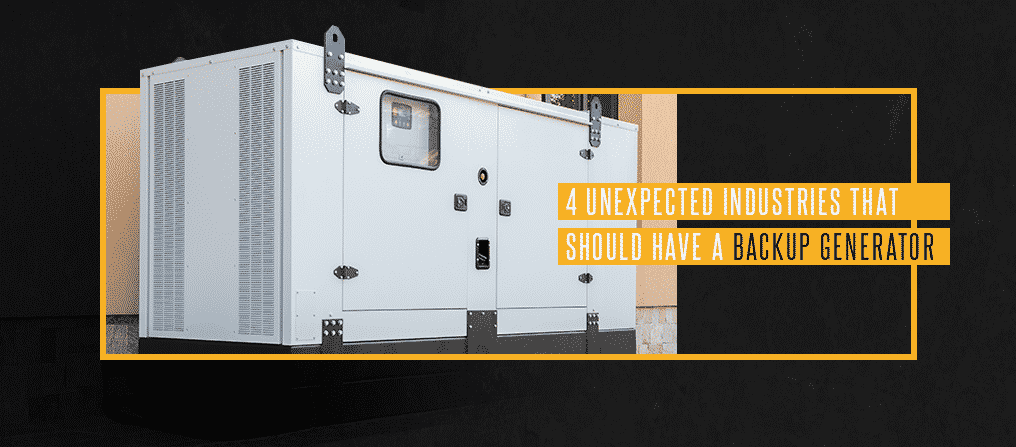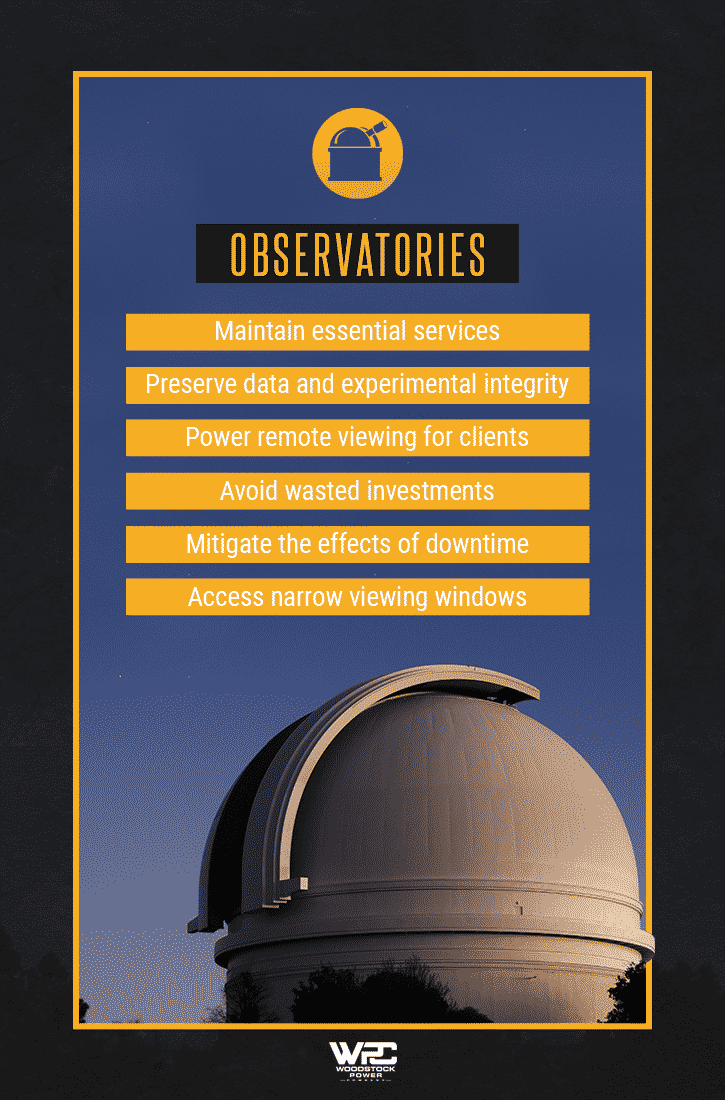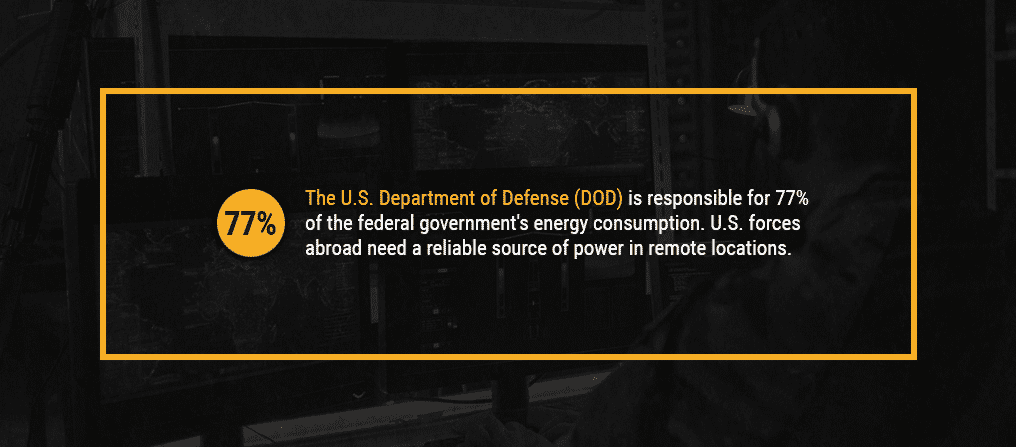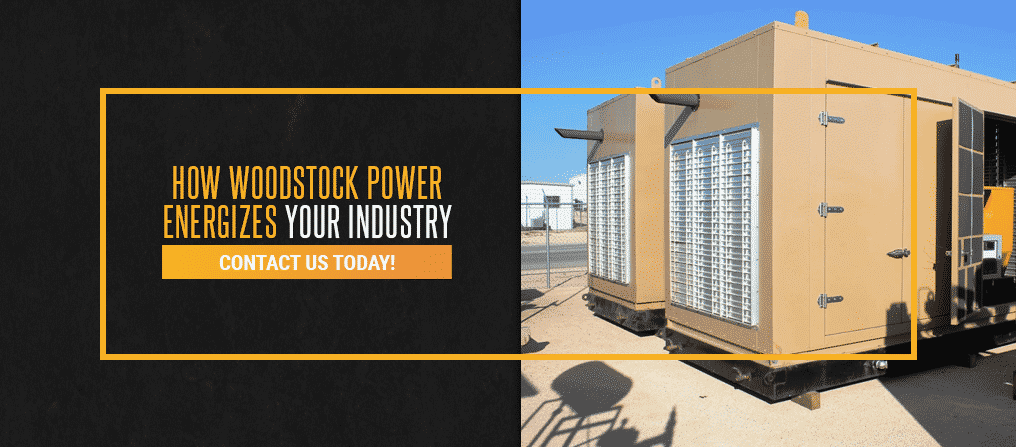4 Unexpected Industries That Should Have a Backup Generator

Most of us don’t think much about electricity until we don’t have it. Energy powers everything we do. In 2017, the U.S. experienced 3,526 outages, lasting an average of 81 minutes.
While an hour and a half without power may cause inconvenience to you as an individual, it can be detrimental to many businesses. That’s why many opt to install backup commercial generators to maintain regular operations. While you can find them in any business sector — several industries — to many people’s surprise, rely on backup generators out of necessity.
Industries That Require Backup Generators

1. Cannabis Farms
When it comes to medical marijuana production, we often imagine open-air fields and the great outdoors. That’s why many people are surprised when they hear how much energy some legal cannabis farms consume. A good majority of cannabis in commercial production never sees the light of day. Instead, industrial grow rooms cultivate the plants indoors under high-intensity lighting and strict air quality conditions.
Hemp cultivation for CBD processing also follows an equipment-intensive process. It will start with either a seed drill for planting seeds or a transplanter for seedlings. When ready to harvest, hemp farmers rely on a combine, which is the same tool used to cut and collect wheat. They may also use a CBD hemp harvester, which cuts the hemp plant without damaging its structure. Once ready for processing, several machines can be used for decortication, or separating the hemp fiber from the plant stalk.
Due to the high-demand conditions required for optimal growing, cannabis facilities go through a lot of energy. A four-plant lighting fixture can use as much electricity as 29 refrigerators. When you consider how many plants a 5,000-square-foot grow room might have, you can only begin to comprehend how much power is being used.
There are many reasons that medical marijuana grow facilities need access to commercial and industrial grade generators. The first is the show-stopping amount of power required. Sometimes, the power grid can’t supply that much energy. In those cases, the facility might rely on a diesel or natural gas generator to offset demand. Some facilities are located off the grid entirely. They will have to generate 100% of their power onsite, often with the help of a generator and sometimes using solar panels or another renewable energy source.
Another reason is the high cost of downtime in this sensitive cultivation process. Cannabis plants need 18 hours to 24 hours of light a day, depending on the strain. If a plant receives less than 18 hours of light, it can flower too early, and reduce the yield. That makes a cannabis facility, which has invested heavily in their plants, uniquely susceptible to power outages lasting several days.
While an outage of an hour or two won’t trigger premature flowering, it can prolong maturation. Marijuana’s growth is directly dependent on the amount of light it gets. Less light translates to slower growth. With high production costs to begin with, growers need to minimize the darkness their plants receive.
This problem is similar to the high costs of downtime in any production industry. Any hour of planned production that gets interrupted by an outage leads to money evaporating. Without a generator, a facility is paying for storage space and labor that aren’t contributing to production.

2. Observatories
Observatories are crucial for experiments and data collection projects in the scientific community. Power outages can interrupt this precise work and waste investment dollars. Like cannabis farms, observatories need an immense amount of power. Most observatories have a variety of computers, lights, communications systems and IT servers housed on-premises. Some also have residential facilities for staff and visiting astronomers as well as administrative and technical offices.
They also have several powerful telescopes running, which take up a vast majority of the power. A study of the European Southern Observatory (ESO) in Chile revealed that 67% of all the energy used went to the main telescope area, with another 9% going to another telescope. The primary power demand for telescopes is the chillers and pump systems, which cool the telescopes. They also use intense air conditioning units to keep them cool during the heat of the day. Like data centers, observatories also draw power to an uninterruptible power supply (UPS), which guarantees the telescopes will remain operational without interruption if an outage occurs.
By necessity, observatories are located far from populated areas, which create light pollution. As a result, most are far from the power grid. Most observatories only have the option for onsite power generation. In ESO, the facility uses a multi-fuel turbine that generates electricity from diesel and liquid petroleum gas (LPG). They use three backup diesel generators to keep power running while the turbine receives maintenance.
Why do observatories need constant power? First, outages might happen pretty often since the facility’s prime power generator needs regular maintenance. An outage, even a short one, can have many consequences. Observatories need constant power to:
- Maintain essential services: Observatories serve all kinds of purposes, and one of them is monitoring asteroids. NASA funds observatories focused on the early detection of dangerous incoming asteroids to protect the U.S. and the rest of the world from these potentially deadly threats. They need constant power to ensure the earliest detection possible.
- Preserve data and experimental integrity: Most astronomers’ main issue is that when the telescope is off, it’s impossible to know what was missed. Interruptions in observation time can disrupt large-scale or long-term experiments and create unfillable gaps in data.
- Power remote viewing for clients: Many observatories offer remote viewing capabilities. They use a contracted services business model, allowing scientists to book viewing time and receive a live feed and recorded video. Operations that use this model need to provide uninterrupted data to their clients because that’s what they pay for.
- Avoid wasted investments: Observatories and their equipment cost millions of dollars to build, furnish and maintain. They are often funded by government grants and private investors. Facilities are accountable for using these investments wisely to continue producing new knowledge and scientific studies at a rate that justifies the amount spent. Generators make power outages more avoidable, which makes them crucial for preserving investments.
- Mitigate the effects of downtime: Observatories are already subject to a lot of downtime. Clouds can render an entire night or week useless. If the targets of observation are too close to the moon, they also can’t be viewed because of the light interference. Maintaining equipment at published specifications is also crucial. Observatory equipment has a precise resolution, sensitivity or throughput that can’t be achieved with less expensive equipment. As a result, regularly scheduled maintenance is crucial to protecting investments. All these incidents can result in downtime, and power outages put another unnecessary strain on the facility.
- Access narrow viewing windows: Consider solar eclipses or other space events that can only be seen from specific locations for a limited time. Anything from asteroids to comets have limited viewing opportunities. An inopportune outage can delay critical research until the next window arises, which could be years away.
Any interruption in operations costs observatories money and erodes their competitiveness. These facilities use a UPS to ensure consistent data. However, most UPSs will only provide power for a short window, such as half an hour. They are designed to supply power during a blink or while generators kick on. Generators are essential to mitigate long-term outages.
3. Ski Resorts
Ski resorts need electricity to heat the lodge, provide premium services, generate fake snow and operate the ski lift. Ski season faces many power outages because winter weather is a driving force in causing electrical systems and infrastructure to fail. Some causes of winter power outages include:
- Cold temperatures: Cold weather can put a lot of stress on the power grid. The power system consists of thousands of electromechanical components. These components work best under optimal temperature conditions, usually in the middle of the temperature and humidity range they were designed for. When they’re new, they can operate in extreme conditions. As they age, they take the extra strain from cold weather. Couple that with the increase in demand due to people heating their homes and businesses, and electrical systems may fail.
- Ice: Ice or snow buildup on the power lines can weigh them down, causing them to eventually snap if it becomes too much. The same thing can happen with nearby tree branches. Ice and snow on trees are a particular threat at ski mountains, often surrounded by forest. Downed limbs in the surrounding towns can cause widespread outages, affecting a resort’s ability to remain open and generate snow.
- Wind: Winter blizzards can bring high-speed winds, blowing down telephone poles and trees alike.
- Animals: One surprising cause of winter outages is the presence of woodland creatures. Squirrels and birds may take up residence in a transformer to get warm during cold nights, eventually causing malfunctions.
For businesses that can only remain open during the fall and winter months, like ski mountains, any outage can be detrimental. Since winter presents many causes for concern regarding reliable energy, a generator is an essential investment. A commercial generator can power:
- Snow-making machines: Snow is what makes the ski industry go round. Making artificial snow allows ski season to begin in the early fall and stay open through early April. It extends business opportunities significantly and helps the mountain remain in businesses during spans without any snow. Since snow machines are needed throughout the trails where power outlets don’t reach, a portable commercial generator is crucial.
- Ski lifts: How many of your guests would be willing to trek up the mountain on foot? They would have to take off their skis and carry them up on every hike just to reattach them for the trip down. Your ski lifts need to remain operational at all times to serve your guests appropriately. An outage at the wrong moment could leave skiers stranded on the lift.
- Amenities: Closures can cause issues, especially for resorts that have guests. It can be a safety hazard not to have heat in the winter during an unexpected outage. Electrical generators can keep your facilities warm and your guests happy, so outages don’t affect business. They prevent resorts from closing and turning guests away in the middle of their stay, and can power up all your amenities, including hotels, spas and gift shops.
- Business opportunities: Generators can even allow you to turn your facility into a destination during power outages. If the residents of your host community and surrounding towns are without power, you can attract new customers looking to duck out of the cold, enjoy hot meals and connect to the internet. A fully powered ski lodge can turn into a local hotspot for those without power.
- High energy demands: Generators can provide power for a grid that can’t keep up with regular demand. Generators are also an excellent investment for mountains that don’t offer easy access to the grid in areas that may be slow to restore power after an outage.

4. Military
The U.S. Department of Defense (DOD) is responsible for 77% of the federal government’s energy consumption. U.S. forces abroad need a reliable source of power in remote locations. Whether it’s for running practice drills, surveilling the enemy or performing mission-critical operations, generators can support:
- Gear and equipment
- Field hospitals
- Lighting and security systems for camps
- IT equipment
A particularly power-heavy aspect of these operations is field hospitals and spillover shelters. Civilian hospitals draw on lots of power for intense lighting and air quality conditions in operating rooms and high-power medical equipment such as X-ray and MRI machines. While often more makeshift, field hospitals also require many kilowatts of power. They need a constant supply to operate technical instruments and life-saving medical equipment. Because they are often temporary, a portable generator can be an improvement over permanent electrical wiring.
Generators can function even in the harshest conditions, making them suitable for a range of field operations. Diesel is also incredibly reliable. It’s less flammable and volatile than other fuel types, making it safer to use with the sensitive equipment found on a base.
Diesel generators are so popular among the armed forces that many commercial generator manufacturers offer their military surplus generators to civilian businesses. These generators need to be highly reliable, with 100% uptime to power radar, machinery and medical equipment. They save lives and protect our national security. Businesses fortunate enough to secure a surplus generator of this caliber can take advantage of incredible reliability. They are built to last, often with higher gauge metal allowing them to operate in severe conditions and even reduce maintenance needs.
Generators in the defense sector are often manufactured to different requirements, allowing them to serve this industry’s unique needs. For example, mobility is a crucial need that many commercial buildings don’t need to think about. On the battlefield, power needs to travel with its users as they carry out missions and move positions.
Fuel efficiency is also essential because fuel transport convoys are frequent targets for enemies. Reducing the amount of fuel used protects soldiers from injury and lessens costs and risks of transporting energy. In many cases, the most portable and efficient models are manufactured for this sector in particular.

How Woodstock Power Energizes Your Industry
While many of the sectors on this list are energy guzzlers in remote locations, any business can benefit from backup generators. On average, a four-hour power outage costs U.S. businesses between $10,000-$20,000. Costs for a three-day outage start around $50,000. The major impacts of an outage include:
- Decreased revenue due to the inability to serve customers or produce products.
- Spoiled inventory in the absence of refrigeration or air quality control.
- Damaged equipment as the power surges when electricity returns.
- Lowered productivity due to computer and equipment downtime and staff being unable to work.
- An inability for customer service agents to reach or help customers.
Some or all of these consequences can affect any business in any industry. At Woodstock Power, we provide customers in all sectors access to reliable backup power through diesel and natural gas backup generators. Our priority is finding the best commercial generators for your needs, which can vary depending on your industry and business. We don’t favor particular brands. Instead, we help you find the best deals for your power requirements, often up to 70% off the market price.
Learn more about the industries we serve and how we can support your company’s power needs.

